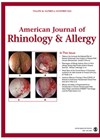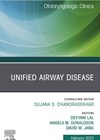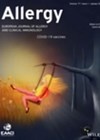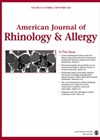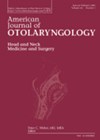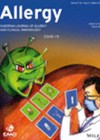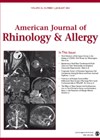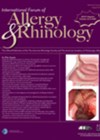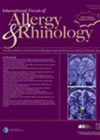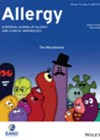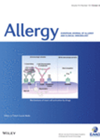
Journal Reviews
The future of biologics?
This paper takes a deep dive into how eosinophilia affects the responsiveness of the host to the two monoclonal antibodies mepolizumab and bendralizumab, both of which are active against IL5. We know that eosinophils are attracted and trapped into the...
How best can we manage Samter’s Triad/AERD?
The classic ‘Samter’s Triad’ of asthma, chronic rhinosinusitis with nasal polyposis (CRSwNP), and aspirin sensitivity is now referred to as aspirin-exacerbated respiratory disease (AERD) or non-steroidal anti-inflammatory-exacerbated respiratory disease. We often come across in our rhinology setting, patients with recalcitrant...
Eosinophilic or not eosinophilic: dupilumab seems to work
Chronic rhinosinusitis with nasal polyps (CRSwNP) is a type 2 inflammation with interleukin (IL)-4, IL-13, and IL-5. Tissue eosinophilia in nasal polyps dramatically increased over a 10-20-year period. Classification of the severity of eosinophil status is expected to lead to...
Serum biomarkers for CRSwNP
This cross-sectional comparative study looked at 50 patients with nasal polyps who, at the time of diagnosis, also had a blood test evaluating serum total IgE, IL-17 and Pentraxin-3. The study assesses whether these blood markers are useful in the...
A new era in the treatment of recalcitrant nasal polyps?
Chronic rhinosinusitis with nasal polyps (CRSwNP) can be difficult to treat effectively in patients with aggressive or recalcitrant disease. Omalizumab (Xolair) is a monoclonal anti-IgE antibody with proven benefits for patients with moderate/severe asthma and CRSwNP, but this study looks...
COVID-19 in patients with chronic rhinosinusitis with polyps. Are they at risk?
COVID-19 entry factors are highly present in nasal epithelial cells. These factors include ACE2 and TMPRSS2. Their presence in patients with chronic rhinosinusitis with nasal polyps (CRSwNP) was not investigated before. Authors investigated expression of ACE2 and TMPRSS2 in two...
Simple preoperative tests predicting outcomes for ESS patients?
We are all familiar with patients suffering extensive nasal polyps who relapse all to soon after careful and thorough endoscopic sinus surgery (ESS). This paper looks to answer whether we can predict which patients will do well, and which less...
Location, location, location: How to get the steroid where you need it, in chronic rhinosinusitis
What almost all current guidelines on chronic rhinosinusitis have in common is the importance of intranasal steroid (INCS) use. However, it is increasingly understood that the efficacy of INCS depends on their efficient delivery to the point of need, i.e....
The search for the holy grail of rhinosinusitis: another step towards phenotyping in CRS wNP?
For many years, scientists and clinicians have been trying to understand the infinite variability within the term ‘rhinosinusitis’ using radiology, basic science, epidemiology and then using their insights to solve the riddle of management: how to explain why some patients...
The hippo and the nose
Chronic rhinosinusitis with nasal polyps (CRSwNP) leads to histological changes including thickening of the basilar membrane and epithelial proliferation. Molecular mechanisms underlying these changes are still not fully clear. A signalling pathway called the hippo with Yes‐associated protein (YAP) as...
CRSwNP, another monoclonal antibody
Interleukins 4, 5 and 13 were shown to be important factors in type 2 inflammation, which characterises chronic rhinosinusitis with nasal polyposis (CRSwNP). In CRSwNP non-responders and those who recur short after-surgery monoclonal antibodies might be an answer. Examples include...
Chronic rhinosinusitis, are we treating the same disease?
Chronic rhinosinusitis (CRS) is a heterogenic disease. The effects of heterogeneity on treatment outcome are not very clear. Authors used clinical features such as endoscopic findings scores and full blood count findings in addition to analysis of 35 molecular markers....

